Voyager Is So Happy, Because It’s The Bravest Satellite Of All. It Has Gone The Furthest. And It’s
Voyager is so happy, because it’s the bravest satellite of all. It has gone the furthest. And it’s not lonely, because it’s talking to us. It phones home. And it tells us all about the wonderful things that it’s seeing. …There’s a whole universe to explore, and it’s just leaving our Solar System right now. It’s very brave and very lucky to be doing what it’s doing, so it’s not going to get lost. It’s traveled further than anything we’ve ever built has traveled before. It’s actually showing us the way. … It might have been safer for it to just stay home, and stay inside a building, but then it would have been sad forever, because it never would have done its purpose. It never would have discovered things. It’s all a wonderful story of great discovery and success, and it couldn’t have happened if Voyager hadn’t been brave… It’s not really the fact that everything always has a start and an end, it’s what happens in the middle that counts. What do you while you’re alive? What do you do while you’re laughing? And I think we’re doing exactly what makes Voyager joyful and as happy as it could be. Think about the fact that you’re a little bit like Voyager. In that you’re going to go see the world, and you’re going to call your mom on the phone and tell her about the wonderful things that you see. … You wouldn’t want to spend your whole life hiding under your bed and never seeing anything in your whole life, you want to be able to do what makes you happy and joyful and learn about things to discover. You might be the person that discovers something really important for everybody else on the world, but you can never discover that if you just hide and only do things that are safe. So think about yourself a little bit like Voyager. What makes you laugh? It’s not just staying, hiding underneath your bed safely at home.
Cmdr. Chris Hadfield, reassuring a five-year-old who was worried about the Voyager satellite (source)
oh no I’m having feelings about a satellite
tagging Doctor Who, because.
(via reconditarmonia)
More Posts from Fillthevoid-with-space and Others
Gretchen: On the International Space Station, you have astronauts from the US and from other English speaking countries and you have cosmonauts from Russia. And obviously it’s very important to get your communication right if you’re on a tiny metal box circling the Earth or going somewhere. You don’t want to have a miscommunication there because you could end up floating in space in the wrong way. And so one of the things that they do on the ISS – so first of all every astronaut and cosmonaut needs to be bilingual in English and Russian because those are the languages of space. Lauren: Yep. Wait, the language of space are English and Russian? I’m sorry, I just said ‘yep’ and I didn’t really think about it, so that’s a fact is it? Gretchen: I mean, pretty much, yeah, if you go on astronaut training recruitment forums, which I have gone on to research this episode… Lauren: You’re got to have a backup job, Gretchen. Gretchen: I don’t think I’m going to become an astronaut, but I would like to do astronaut linguistics. And one of the things these forums say, is, you need to know stuff about math and engineering and, like, how to fly planes and so on. But they also say, you either have to arrive knowing English and Russian or they put you through an intensive language training course. But then when they’re up in space, one of the things that they do is have the English native speakers speak Russian and the Russian speakers speak English. Because the idea is, if you speak your native language, maybe you’re speaking too fast or maybe you’re not sure if the other person’s really understanding you. Whereas if you both speak the language you’re not as fluent in, then you arrive at a level where where people can be sure that the other person’s understanding. And by now, there’s kind of this hybrid English-Russian language that’s developed. Not a full-fledged language but kind of a- Lauren: Space Creole! Gretchen: Yeah, a Space Pidgin that the astronauts use to speak with each other! I don’t know if anyone’s written a grammar of it, but I really want to see a grammar of Space Pidgin.
Excerpt from Episode 1 of Lingthusiasm: Speaking a single language won’t bring about world peace. Listen to the full episode, read the transcript, or check out the show notes. (via lingthusiasm)

30 Doradus, located in the heart of the Tarantula nebula, is the brightest star-forming region in our galactic neighborhood. The nebula resides 170,000 light-years away in the Large Magellanic Cloud. Links to very large images in comments.
js

The 10-billion-year life cycle of the Sun, illustrated by David Meltzer for National Geographic, May 1974.

I’m back! July was nuts! June was also nuts! I’ve missed this podcast, though, and have been thinking about it the entire time because I will never stop loving space. I was working my way through a very meaty book on Edmond Halley and I am here to report on my findings, and also compile some of the things I’ve already said about this cool guy and his cool contributions to science.
Below the cut are my standard glossary, transcript, timeline of people mentioned, sources, and music credits. I take topic suggestions from Tumblr messages, you can tweet at me on Twitter at @HDandtheVoid, or you can ask me to my face if you know me. Subscribe on iTunes to get the new episodes of my increasingly erratically updated podcast, and please please please rate and review it. Go ahead and tell friends if you think they’d like to hear it, too!
(My thoughts on the next episode are Stephen Hawking and his theories or famous comets. The next episode will go up in August—hopefully August 20th!)
Glossary
sidereal year—the time required for the earth to complete an orbit of the sun relative to the stars.
tropical year—the interval at which seasons repeat and the basis for the calendar year.
Script/Transcript
Timeline
Julius Caesar, Roman (100-45 BCE)
Augustus Caesar, Roman (63-14 BCE)
Nicolaus Copernicus, Polish (1473-1543)
Pope Gregory XIII, Italian (1502-1585)
Tycho Brahe, Danish (1546-1601)
Johannes Kepler, German (1571-1630)
Johannes Hevelius, Polish (1611-1687)
Giovanni Cassini (in French, Jean-Dominique Cassini), Italian/French (1625-1712)
Queen Christina, Swedish (1626-1689)
Isaac Newton, English (1643-1727)
John Flamsteed, English (1646-1719)
Elisabeth Hevelius, Polish (1647-1693)
Edmond Halley, English (1656-1742)
John Harrison, English (1693-1776)
Sources
Morse, Stephen P. “The Julian Calendar and why we need to know about it.” The Association of Professional Genealogists Quarterly (March 2014). Accessed July 15, 2018.
Julian Date Converter via the Astronomical Applications Department of the U.S. Naval Observatory.
Hughes, David W. “Edmond Halley, Scientist.” British Astronomical Association (1985). Accessed July 27, 2018.
Cook, Alan. Edmond Halley: Charting the Heavens and the Seas. Clarendon Press: Oxford, 1998.
Intro Music: ‘Better Times Will Come’ by No Luck Club off their album Prosperity
Outro Music: ‘Fields of Russia’ by Mutefish off their album On Draught

We will not leave the crew hanging!
The crew module uprighting system rotates Orion should it come to rest upside down when landing in the water.


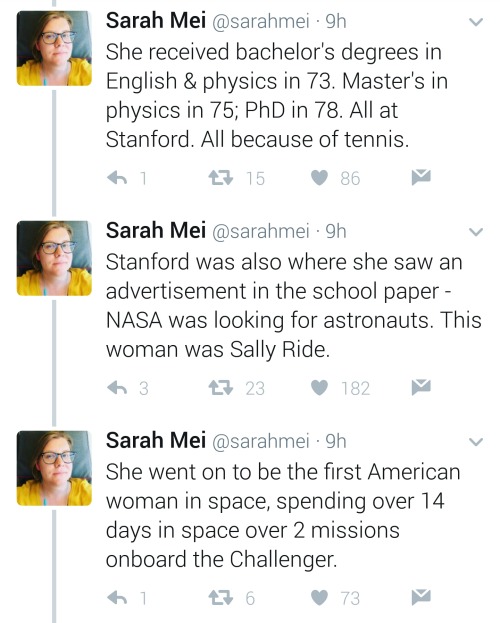
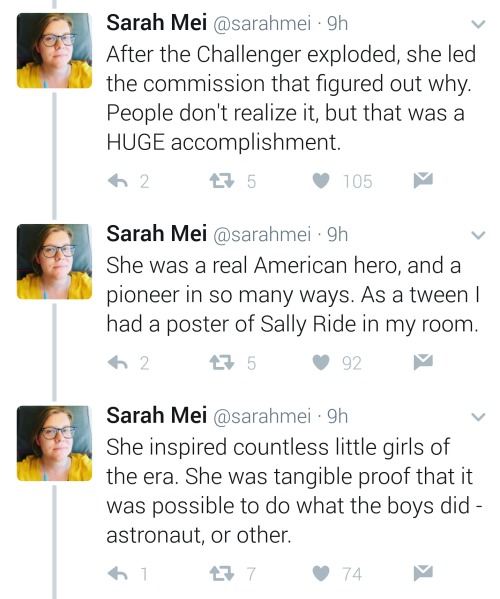
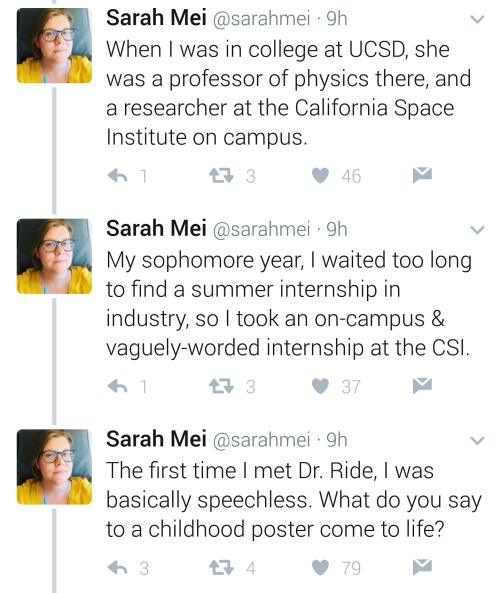
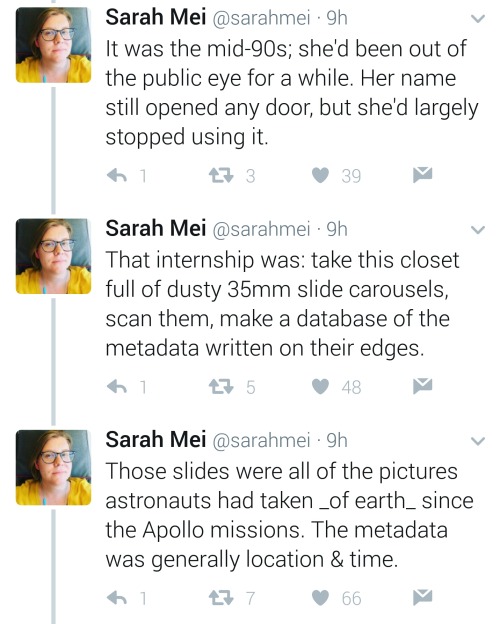
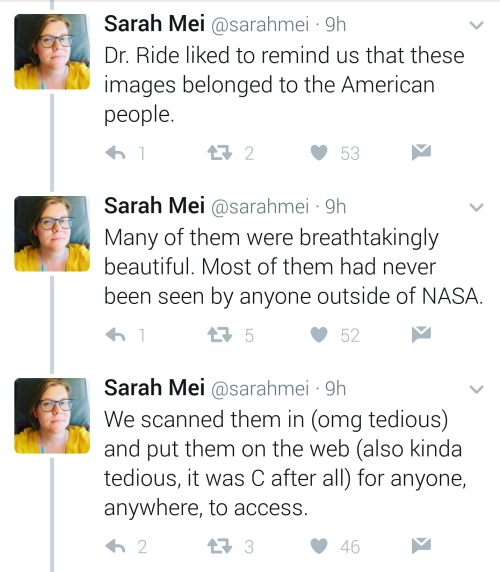
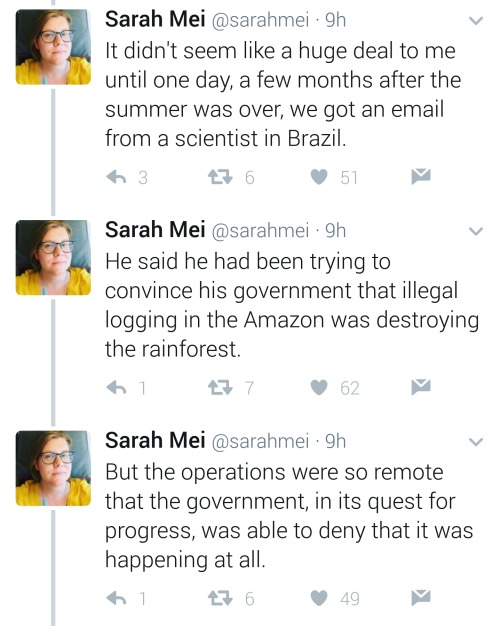
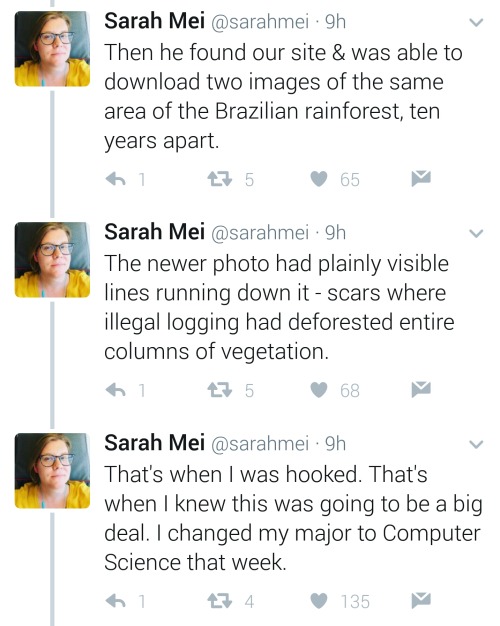
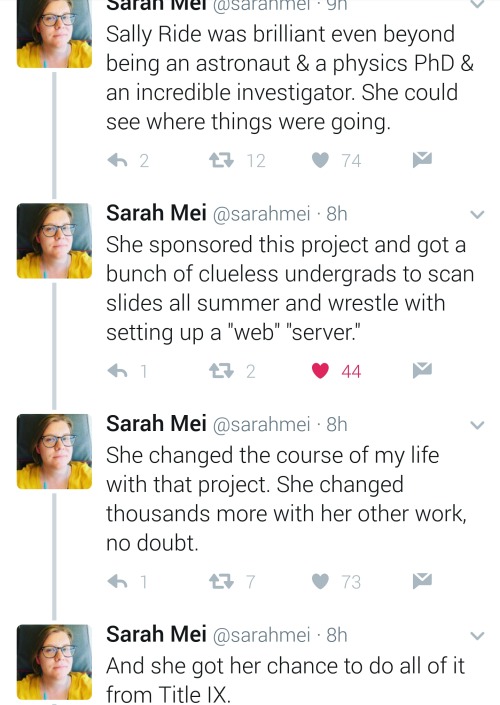
Equal opportunity benefits can be far-reaching
https://twitter.com/sarahmei/status/818682610712866817
Why Webb Needs to Chill
Our massive James Webb Space Telescope is currently being tested to make sure it can work perfectly at incredibly cold temperatures when it’s in deep space.
How cold is it getting and why? Here’s the whole scoop…
Webb is a giant infrared space telescope that we are currently building. It was designed to see things that other telescopes, even the amazing Hubble Space Telescope, can’t see.

Webb’s giant 6.5-meter diameter primary mirror is part of what gives it superior vision, and it’s coated in gold to optimize it for seeing infrared light.

Why do we want to see infrared light?
Lots of stuff in space emits infrared light, so being able to observe it gives us another tool for understanding the universe. For example, sometimes dust obscures the light from objects we want to study – but if we can see the heat they are emitting, we can still “see” the objects to study them.
It’s like if you were to stick your arm inside a garbage bag. You might not be able to see your arm with your eyes – but if you had an infrared camera, it could see the heat of your arm right through the cooler plastic bag.

Credit: NASA/IPAC
With a powerful infrared space telescope, we can see stars and planets forming inside clouds of dust and gas.

We can also see the very first stars and galaxies that formed in the early universe. These objects are so far away that…well, we haven’t actually been able to see them yet. Also, their light has been shifted from visible light to infrared because the universe is expanding, and as the distances between the galaxies stretch, the light from them also stretches towards redder wavelengths.
We call this phenomena “redshift.” This means that for us, these objects can be quite dim at visible wavelengths, but bright at infrared ones. With a powerful enough infrared telescope, we can see these never-before-seen objects.

We can also study the atmospheres of planets orbiting other stars. Many of the elements and molecules we want to study in planetary atmospheres have characteristic signatures in the infrared.

Because infrared light comes from objects that are warm, in order to detect the super faint heat signals of things that are really, really far away, the telescope itself has to be very cold. How cold does the telescope have to be? Webb’s operating temperature is under 50K (or -370F/-223 C). As a comparison, water freezes at 273K (or 32 F/0 C).
How do we keep the telescope that cold?
Because there is no atmosphere in space, as long as you can keep something out of the Sun, it will get very cold. So Webb, as a whole, doesn’t need freezers or coolers - instead it has a giant sunshield that keeps it in the shade. (We do have one instrument on Webb that does have a cryocooler because it needs to operate at 7K.)

Also, we have to be careful that no nearby bright things can shine into the telescope – Webb is so sensitive to faint infrared light, that bright light could essentially blind it. The sunshield is able to protect the telescope from the light and heat of the Earth and Moon, as well as the Sun.

Out at what we call the Second Lagrange point, where the telescope will orbit the Sun in line with the Earth, the sunshield is able to always block the light from bright objects like the Earth, Sun and Moon.

How do we make sure it all works in space?
By lots of testing on the ground before we launch it. Every piece of the telescope was designed to work at the cold temperatures it will operate at in space and was tested in simulated space conditions. The mirrors were tested at cryogenic temperatures after every phase of their manufacturing process.

The instruments went through multiple cryogenic tests at our Goddard Space Flight Center in Maryland.

Once the telescope (instruments and optics) was assembled, it even underwent a full end-to-end test in our Johnson Space Center’s giant cryogenic chamber, to ensure the whole system will work perfectly in space.

What’s next for Webb?
It will move to Northrop Grumman where it will be mated to the sunshield, as well as the spacecraft bus, which provides support functions like electrical power, attitude control, thermal control, communications, data handling and propulsion to the spacecraft.

Learn more about the James Webb Space Telescope HERE, or follow the mission on Facebook, Twitter and Instagram.
Make sure to follow us on Tumblr for your regular dose of space: http://nasa.tumblr.com.
This is so sweet! What a nice way to spend a Saturday night.
Make Sure You Observe the Moon on October 20
On Saturday, October 20, NASA will host the ninth annual International Observe the Moon Night. One day each year, everyone on Earth is invited to observe and learn about the Moon together, and to celebrate the cultural and personal connections we all have with our nearest celestial neighbor.
There are a number of ways to celebrate. You can attend an event, host your own, or just look up! Here are 10 of our favorite ways to observe the Moon:
1. Look up

Image credit: NASA’s Scientific Visualization Studio/Ernie Wright
The simplest way to observe the Moon is simply to look up. The Moon is the brightest object in our night sky, the second brightest in our daytime sky and can be seen from all around the world — from the remote and dark Atacama Desert in Chile to the brightly lit streets of Tokyo. On October 20, the near side of the Moon, or the side facing Earth, will be about 80 percent illuminated, rising in the early evening.
See the Moon phase on October 20 or any other day of the year!
2. Peer through a telescope or binoculars

The Moon and Venus are great targets for binoculars. Image Credit: NASA/Bill Dunford
With some magnification help, you will be able to focus in on specific features on the Moon, like the Sea of Tranquility or the bright Copernicus Crater. Download our Moon maps for some guided observing on Saturday.
3. Photograph the Moon

Image credit: NASA/GSFC/ASU
Our Lunar Reconnaissance Orbiter (LRO) has taken more than 20 million images of the Moon, mapping it in stunning detail. You can see featured, captioned images on LRO’s camera website, like the one of Montes Carpatus seen here. And, of course, you can take your own photos from Earth. Check out our tips on photographing the Moon!
4. Take a virtual field trip

Image credit: NASA/JPL-Caltech
Plan a lunar hike with Moontrek. Moontrek is an interactive Moon map made using NASA data from our lunar spacecraft. Fly anywhere you’d like on the Moon, calculate the distance or the elevation of a mountain to plan your lunar hike, or layer attributes of the lunar surface and temperature. If you have a virtual reality headset, you can experience Moontrek in 3D.
5. Touch the topography

Image credit: NASA GSFC/Jacob Richardson
Observe the Moon through touch! If you have access to a 3D printer, you can peruse our library of 3D models and lunar landscapes. This model of the Apollo 11 landing site created by NASA scientist Jacob Richardson, is derived from LRO’s topographic data. Near the center, you can actually feel a tiny dot where astronauts Neil Armstrong and Buzz Aldrin left the Lunar Descent Module.
6. Make Moon art

Image credit: LPI/Andy Shaner
Enjoy artwork of the Moon and create your own! For messy fun, lunar crater paintings demonstrate how the lunar surface changes due to consistent meteorite impacts.
7. Relax on your couch

Image credit: NASA’s Scientific Visualization Studio/Ernie Wright
There are many movies that feature our nearest neighbor, from A Voyage to the Moon by George Melies, to Apollo 13, to the newly released First Man. You can also spend your evening with our lunar playlist on YouTube or this video gallery, learning about the Moon’s role in eclipses, looking at the Moon phases from the far side, and seeing the latest science portrayed in super high resolution. You’ll impress all of your friends with your knowledge of supermoons.
8. Listen to the Moon
Video credit: NASA’s Scientific Visualization Studio/Ernie Wright
Make a playlist of Moon songs. For inspiration, check out this list of lunar tunes. We also recommend LRO’s official music video, The Moon and More, featuring Javier Colon, season 1 winner of NBC’s “The Voice.” Or you can just watch this video featuring “Clair de Lune,” by French composer Claude Debussy, over and over.
9. See the Moon through the eyes of a spacecraft

Image credit: NASA/GSFC/MIT
Visible light is just one tool that we use to explore our universe. Our spacecraft contain many different types of instruments to analyze the Moon’s composition and environment. Review the Moon’s gravity field with data from the GRAIL spacecraft or decipher the maze of this slope map from the laser altimeter onboard LRO. This collection from LRO features images of the Moon’s temperature and topography. You can learn more about our different missions to explore the Moon here.
10. Continue your observations throughout the year

Image credit: NASA’s Scientific Visualization Studio/Ernie Wright
An important part of observing the Moon is to see how it changes over time. International Observe the Moon Night is the perfect time to start a Moon journal. See how the shape of the Moon changes over the course of a month, and keep track of where and what time it rises and sets. Observe the Moon all year long with these tools and techniques!
However you choose to celebrate International Observe the Moon Night, we want to hear about it! Register your participation and share your experiences on social media with #ObserveTheMoon or on our Facebook page. Happy observing!
Make sure to follow us on Tumblr for your regular dose of space: http://nasa.tumblr.com.
Does Mars Have Rings? Not Right Now, But Maybe One Day
NASA - Mars Science Laboratory (MSL) patch. March 20, 2017 As children, we learned about our solar system’s planets by certain characteristics – Jupiter is the largest, Saturn has rings, Mercury is closest to the sun. Mars is red, but it’s possible that one of our closest neighbors also had rings at one point and may have them again someday. That’s the theory put forth by NASA-funded scientists at Purdue University, Lafayette, Indiana, whose findings were published in the journal Nature Geoscience. David Minton and Andrew Hesselbrock developed a model that suggests that debris that was pushed into space from an asteroid or other body slamming into Mars around 4.3 billion years ago alternates between becoming a planetary ring and clumping together to form a moon. One theory suggests that Mars’ large North Polar Basin or Borealis Basin – which covers about 40 percent of the planet in its northern hemisphere – was created by that impact, sending debris into space. “That large impact would have blasted enough material off the surface of Mars to form a ring,” Hesselbrock said. Hesselbrock and Minton’s model suggests that as the ring formed, and the debris slowly moved away from the Red Planet and spread out, it began to clump and eventually formed a moon. Over time, Mars’ gravitational pull would have pulled that moon toward the planet until it reached the Roche limit, the distance within which a planet’s tidal forces will break apart a celestial body that is held together only by gravity.
Image above: The image from NASA’s Curiosity Mars rover shows one of Mars’ two moons, Phobos, passing directly in front of the other, Deimos, in 2013. New research suggests the moons consolidated long ago from dust rings around the planet and, in the distant future, may disintegrate into new rings. Image Credits: NASA/JPL-Caltech/Malin Space Science Systems/Texas A&M Univ. Phobos, one of Mars’ moons, is getting closer to the planet. According to the model, Phobos will break apart upon reaching the Roche limit, and become a set of rings in roughly 70 million years. Depending on where the Roche limit is, Minton and Hesselbrock believe this cycle may have repeated between three and seven times over billions of years. Each time a moon broke apart and reformed from the resulting ring, its successor moon would be five times smaller than the last, according to the model, and debris would have rained down on the planet, possibly explaining enigmatic sedimentary deposits found near Mars’ equator. “You could have had kilometer-thick piles of moon sediment raining down on Mars in the early parts of the planet’s history, and there are enigmatic sedimentary deposits on Mars with no explanation as to how they got there,” Minton said. “And now it’s possible to study that material.” Other theories suggest that the impact with Mars that created the North Polar Basin led to the formation of Phobos 4.3 billion years ago, but Minton said it’s unlikely the moon could have lasted all that time. Also, Phobos would have had to form far from Mars and would have had to cross through the resonance of Deimos, the outer of Mars’ two moons. Resonance occurs when two moons exert gravitational influence on each other in a repeated periodic basis, as major moons of Jupiter do. By passing through its resonance, Phobos would have altered Deimos’ orbit. But Deimos’ orbit is within one degree of Mars’ equator, suggesting Phobos has had no effect on Deimos. “Not much has happened to Deimos’ orbit since it formed,” Minton said. “Phobos passing through these resonances would have changed that.” “This research highlights even more ways that major impacts can affect a planetary body,” said Richard Zurek of NASA’s Jet Propulsion Laboratory, Pasadena, California. He is the project scientist for NASA’s Mars Reconnaissance Orbiter, whose gravity mapping provided support for the hypothesis that the northern lowlands were formed by a massive impact. Minton and Hesselbrock will now focus their work on either the dynamics of the first set of rings that formed or the materials that have rained down on Mars from disintegration of moons. Curiosity is part of NASA’s ongoing Mars research and preparation for a human mission to Mars in the 2030s. Caltech manages JPL, and JPL manages the Curiosity mission for NASA’s Science Mission Directorate in Washington. For more about Curiosity, visit: http://www.nasa.gov/msl and http://mars.jpl.nasa.gov/msl/ For more information about NASA missions investigating Mars, visit: https://mars.nasa.gov/ Image (mentioned), Text, Credits: NASA/Laurie Cantillo/Dwayne Brown/JPL/Guy Webster/Purdue University/Steve Tally/Emil Venere/Writer: Brian Wallheimer. Best regards, Orbiter.ch Full article
Here’s the nose scratching sponge I talked about in Episode 19!

This is how astronauts clear our ears (and scratch our noses!) during a spacewalk.
-
 vongeek liked this · 11 months ago
vongeek liked this · 11 months ago -
 heldrcr liked this · 11 months ago
heldrcr liked this · 11 months ago -
 fifty2pickup reblogged this · 1 year ago
fifty2pickup reblogged this · 1 year ago -
 anyonecanplay liked this · 1 year ago
anyonecanplay liked this · 1 year ago -
 harmonyholiday liked this · 1 year ago
harmonyholiday liked this · 1 year ago -
 tehluggage liked this · 1 year ago
tehluggage liked this · 1 year ago -
 veryhighpollen reblogged this · 2 years ago
veryhighpollen reblogged this · 2 years ago -
 theprincessandthepie liked this · 2 years ago
theprincessandthepie liked this · 2 years ago -
 tuiinthekowhai reblogged this · 2 years ago
tuiinthekowhai reblogged this · 2 years ago -
 hegge liked this · 2 years ago
hegge liked this · 2 years ago -
 siterlas reblogged this · 2 years ago
siterlas reblogged this · 2 years ago -
 pulchriate liked this · 2 years ago
pulchriate liked this · 2 years ago -
 meerkatpunk liked this · 2 years ago
meerkatpunk liked this · 2 years ago -
 darkwinglady liked this · 2 years ago
darkwinglady liked this · 2 years ago -
 prometheusascendant liked this · 2 years ago
prometheusascendant liked this · 2 years ago -
 lostrosegarden liked this · 2 years ago
lostrosegarden liked this · 2 years ago -
 emiliosandozsequence reblogged this · 2 years ago
emiliosandozsequence reblogged this · 2 years ago -
 clearestbluest reblogged this · 2 years ago
clearestbluest reblogged this · 2 years ago -
 bethanybeatdowns reblogged this · 3 years ago
bethanybeatdowns reblogged this · 3 years ago -
 healingmachinewithskeletoninside liked this · 3 years ago
healingmachinewithskeletoninside liked this · 3 years ago -
 booksandotherdrugs reblogged this · 3 years ago
booksandotherdrugs reblogged this · 3 years ago -
 smokeythesparky reblogged this · 3 years ago
smokeythesparky reblogged this · 3 years ago -
 whyhellotheregandalf liked this · 4 years ago
whyhellotheregandalf liked this · 4 years ago -
 likadastuff liked this · 4 years ago
likadastuff liked this · 4 years ago -
 janedrewfinally reblogged this · 4 years ago
janedrewfinally reblogged this · 4 years ago -
 janedrewfinally liked this · 4 years ago
janedrewfinally liked this · 4 years ago -
 chalkrevelations reblogged this · 4 years ago
chalkrevelations reblogged this · 4 years ago -
 ttsreina reblogged this · 4 years ago
ttsreina reblogged this · 4 years ago -
 ttsreina liked this · 4 years ago
ttsreina liked this · 4 years ago -
 chalkrevelations reblogged this · 4 years ago
chalkrevelations reblogged this · 4 years ago -
 margotmilevaz liked this · 4 years ago
margotmilevaz liked this · 4 years ago -
 musingsandobsessions reblogged this · 4 years ago
musingsandobsessions reblogged this · 4 years ago -
 chocolateshibe liked this · 4 years ago
chocolateshibe liked this · 4 years ago -
 athousandwords reblogged this · 4 years ago
athousandwords reblogged this · 4 years ago -
 soichitsuji reblogged this · 4 years ago
soichitsuji reblogged this · 4 years ago -
 trollsarenotwelcome reblogged this · 4 years ago
trollsarenotwelcome reblogged this · 4 years ago -
 kireisutaa liked this · 4 years ago
kireisutaa liked this · 4 years ago -
 ravenswolf liked this · 4 years ago
ravenswolf liked this · 4 years ago -
 luciferius-legion liked this · 4 years ago
luciferius-legion liked this · 4 years ago -
 tuwim liked this · 4 years ago
tuwim liked this · 4 years ago -
 weirdquestion liked this · 4 years ago
weirdquestion liked this · 4 years ago -
 aboxthecolourofheartache reblogged this · 4 years ago
aboxthecolourofheartache reblogged this · 4 years ago
A podcast project to fill the space in my heart and my time that used to be filled with academic research. In 2018, that space gets filled with... MORE SPACE! Cheerfully researched, painstakingly edited, informal as hell, definitely worth everyone's time.
243 posts